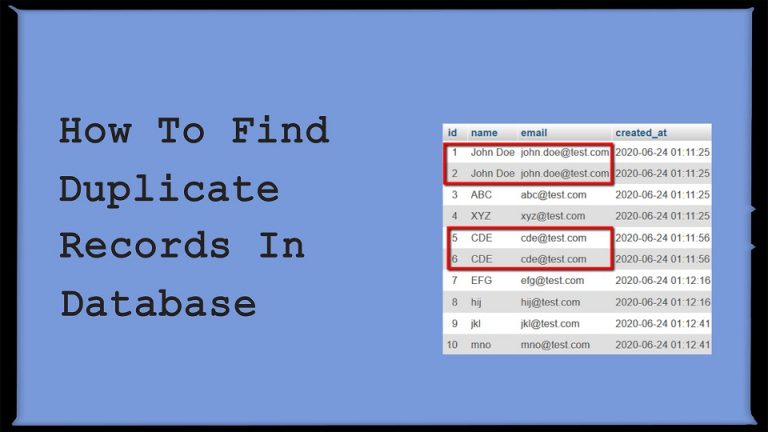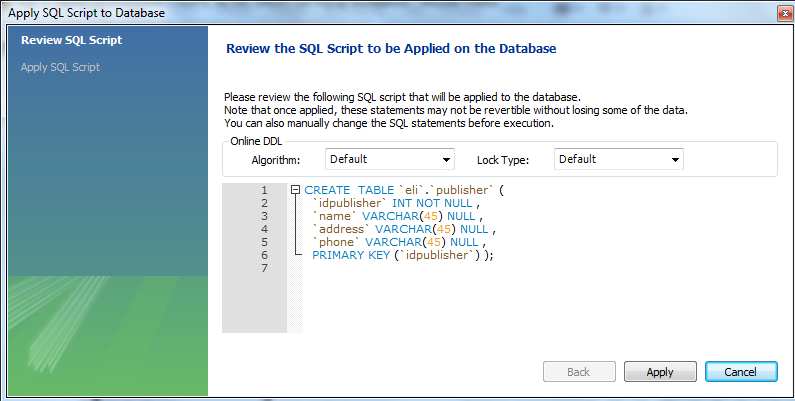


Operations avoid copying table data but may rebuild the table in place. Chances are, you’ll get your database stuck if connections are maxed out. When this algorithm is chosen or selected, all concurrent DML is not permitted so therefore any subsequent queries referencing to the affected table will have to wait or queued into the process list. In most cases, this algorithm can be very expensive in terms of resource usage especially for big and large tables. Operations are performed on a copy of the original table, and table data is copied from the original table to the new table row by row. There are 3 algorithms for which affects how the ALTER TABLE performs for such alterations. As of the most current version of MySQL, i.e. How Does ALTER TABLE Work?ĪLTER TABLE in MySQL has its own subtleties. Indexes in MySQL are a complex beast and they really deserve a topic of their own so we will not go into details here, but if you want to learn more, our earlier post about MySQL indexes should provide some more insight. The above query would add an index called demo_index on the first 10 characters of the column called column_name in a table called demo_table. If you are adding indexes, keep in mind that you can add different types of indexes (for example, a BTREE index or a FULLTEXT index), you can also add an index that covers only a certain amount of characters in a column with a query like so: ALTER TABLE demo_table ADD INDEX demo_index(column_name(10)) This query would convert the table demo_table to disk-based storage. ALTER TABLE demo_table TABLESPACE tablespace_1 STORAGE DISK This query would partition the column demo_column into 8 partitions by hash. ALTER TABLE demo_table PARTITION BY HASH(demo_column) PARTITIONS 8 This query would change the default character set of the table and all character (CHAR, VARCHAR and TEXT) columns. ALTER TABLE demo_table CONVERT TO CHARACTER SET charset_name This query would change the default character set of a specific column. ALTER TABLE demo_table MODIFY column_name VARCHAR(255) CHARACTER SET utf8mb4 This query would add an index on a column demo_column and an unique index on the demo_unique column. ALTER TABLE demo_table ADD INDEX (demo_column), ADD UNIQUE (demo_unique) This query would add an index named demo_index (names can be chosen) on a column called demo_column in a table called demo_table. ALTER TABLE demo_table ADD INDEX demo_index(demo_column) This query would drop the column demo_column on a table demo_table. ALTER TABLE demo_table DROP COLUMN demo_column This query would add a generated column to the table. ALTER TABLE demo_table ADD COLUMN column_2 INT GENERATED ALWAYS AS (column_1 + 1) STORED His query would add a column column_2 after the column column_1 on a table demo_table. ALTER TABLE demo_table ADD column_2 VARCHAR(255) NOT NULL DEFAULT ‘’ AFTER column_1 T Add FIRST to the end of the query to make the column the first column in the table.

His query would add a column column_name to a table demo_table. Here’s a few basic examples of most frequently used queries: ALTER TABLE demo_table ADD column_name VARCHAR(255) NOT NULL DEFAULT ‘’ T In order to actually make use of the ALTER TABLE statement, run a query that changes the structure of a table – ALTER TABLE is used to add, delete or modify columns in a table: the query can also be used to add indexes to columns. If you want the privileges to be used across all databases and all tables within them, simply replace database with a wildcard: GRANT ALTER, CREATE, INSERT ON *.* TO 'demo_user' Replace database with your database name, the wildcard with the table name if you wish the privileges to only be applicable to certain tables (the wildcard makes the privilege applicable across all tables) and demo_user with the name of your user. To assign the required privileges to a certain user, you can use the following query: GRANT ALTER, CREATE, INSERT ON database.* TO 'demo_user' For renaming a table, required privileges are ALTER and DROP for the old table, then CREATE, ALTER and INSERT privileges for the new table to be created. In order to use ALTER TABLE you generally need the ALTER, CREATE and INSERT privileges. Simply put ALTER TABLE changes the structure of a table – it enables you to add, delete columns, add or remove indexes, rename columns or change their type. What is ALTER TABLE and What Does it Do?Īs already mentioned above, the ALTER TABLE statement enables DBAs and developers to add, delete or modify columns in a table. In this blog post we will try to look deeper into what it is, what it does and when should it be used. The ALTER TABLE statement is one of the most frequently used statements in the MySQL world – the statement allows you to add, delete or modify columns in a table.


 0 kommentar(er)
0 kommentar(er)
